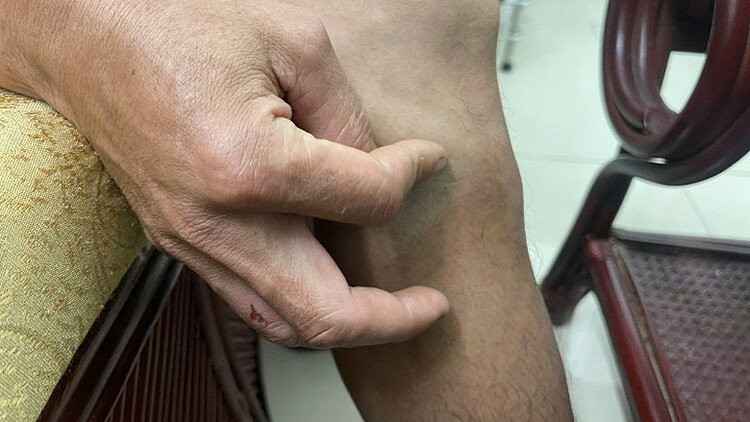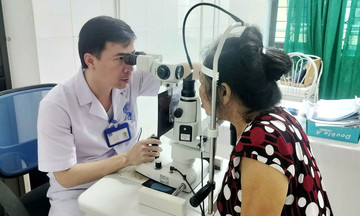On 30/6, representatives from the Dang Van Ngu Hospital, part of the National Institute of Malariology, Parasitology, and Entomology, reported a patient who first experienced symptoms two months prior. Initially, the man's leg became itchy, swollen, and developed a rash. The wound later formed a hard, pus-filled lump, which he mistook for a common boil.
As the swelling softened, the patient was able to drain the pus and discovered an unusually long thread-like object. "One time I pulled out a flat worm, another time a small white worm from my knee, about 70 cm long before it broke," he told the doctors.
An ultrasound at Dang Van Ngu Hospital clearly revealed the image of a guinea worm under the skin. Doctors prescribed antibiotics to prevent infection, along with anti-inflammatory medication to reduce pain and swelling until the entire worm could be removed.
Guinea worm disease is rare globally, previously mainly occurring in Africa. Vietnam has recorded 26 cases in the past 5 years (2020-2025), whereas there were no reported cases before 2020. Cases are primarily concentrated in the northern mountainous provinces, such as Yen Bai, Phu Tho, Thanh Hoa, Lao Cai, and Hoa Binh. Most patients are men who have a habit of eating raw or undercooked food.
Associate Professor, Doctor Do Trung Dung, Head of the Parasitology Department, noted the relatively high number of cases in Vietnam for such a rare disease. He believes epidemiological studies are needed to determine the cause and implement surveillance and communication activities.
Regarding the recent case, Doctor Tran Huy Tho, Deputy Director of the hospital, stated that the cause is still under investigation, but doctors suspect the patient contracted the parasite from drinking spring water containing fleas.
 |
The lesion on the patient's leg healed after the guinea worm was removed. Photo: Thanh Loan |
The lesion on the patient's leg healed after the guinea worm was removed. Photo: Thanh Loan
Guinea worm disease is spread through the digestive tract. The parasite enters the body through contaminated drinking water or raw food containing larvae, especially aquatic species like fish, frogs, and shrimp. Infected individuals may be asymptomatic for the first year. As the female worm migrates and grows in the subcutaneous tissue, the patient may experience mild fever, itching, nausea, diarrhea, and redness in the infected area. The lesion typically swells, secretes yellow fluid, and reveals the white head of the worm as the female emerges.
The primary treatment involves carefully extracting the entire worm to avoid breakage. Many people attempt to remove the worm themselves incorrectly, often pulling it out only partially, which can cause severe inflammatory reactions or dangerous complications such as sepsis, arthritis, abscesses, and even permanent neurological damage if the worm enters a joint or the spine.
Currently, there are no early diagnostic tests, specific treatments, or vaccines for guinea worm disease. The best prevention is ensuring food hygiene, drinking boiled water, and thoroughly cooking aquatic foods. Infected individuals should avoid bathing in natural water sources to prevent spreading larvae into the environment. Bandaging and cleaning the wound until the worm is completely removed is also crucial to prevent complications.
Thuy Quynh












